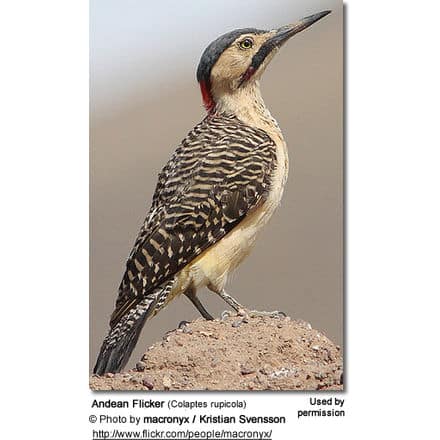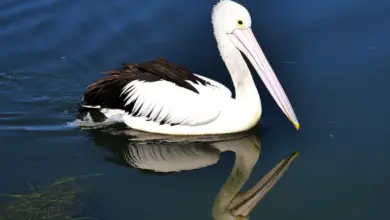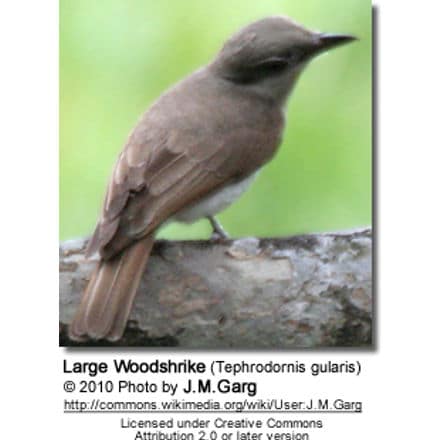Jamaican Pauraque
The Jamaican Pauraques (Siphonorhis Americana) – also known as Jamaican Poorwill, Jamaican Paraque, or Least Poorwill – belongs to the Nightjar family.
It has not been positively recorded since 1860 and is believed to be extinct. However, rumors of its survival exist and this species has, therefore, been listed as “Critically Endangered” since 2008 (BirdLife International). On the other hand, Ornithology.com and the University of Wisconsin – Steven Points list this species as extinct
The Jamaican Pauraques was formerly considered conspecific (one and the same species) with the Least Pauraque (Siphonorhis brewsteri) with which it probably forms a superspecies. (Superspecies are closely related species with non-overlapping distributions; they are thought to have evolved from the same species).
Alternate (Global) Names
Chinese: ????? … Czech: Lelek nejmenší … Danish: Jamaicapoorwill … Dutch: Jaimaica-pauraque, Jamaicapauraque … German: Jamaikanachtschwalbe … Estonian: jamaika öösorr … Finnish: Jamaikankehrääjä … French: Engoulevent de Jamaïque, Engoulevent de la Jamaïque … Italian: Succiacapre della Giamaica … Japanese: jamaikakoyotaka … Norwegian: Jamaicanattravn … Polish: Lelek jamajski, lelek mniejszy … Russian: ???????? ??????? … Slovak: lelek jamajský … Spanish: Chotacabras Jamaicano … Swedish: Jamaikanattskärra
French: Engoulevent de la Jamaïque German: Jamaikanachtschwalbe Spanish: Chotacabras Jamaicano Other common names: Jamaican Pauraque, Least Poorwill(!)
Distribution / Range
The Jamaican Pauraques is/was endemic to, as suggested by its name, Jamaica – an island nation situated in the Caribbean Sea south of Cuba.
The last specimen was collected in 1859 in Westmoreland on the south side of the island. Its numbers declined after the introduction of rats and, some suggest, mongooses. However, mongooses were not introduced until 1872 – after the last confirmed record of this species.
Specimens were also taken in the Great Salt Pond area near Spanishtown (1857) and in the Bluefields area, near Savanna-la-Mar in western Jamaica. Evidence suggests this species occurred in the Hellshire Hills area.
Recent, unconfirmed reports possibly place the Jamaican Pauraque near the Milk River (south of the island) and St. Catherine located in the southeast of Jamaica.
They inhabited either dry limestone forest, semi-arid woodland, or open country at low elevations.
Description
The Jamaican Pauraques was a small, long-tailed nightjar that averaged 9.5 inches (~ 24 cm) in length, including its tail.
The plumage was an overall mottled dark brown except for the narrow white chin patch and the reddish-brown hindneck, spotted black and white.
Their cryptic appearance blended perfectly into their habitat and they are very difficult to spot during the daytime, when they are usually hidden away sleeping.
Gender ID: The long tail feathers were tipped in white in the male and narrowly buff in the female.
Similar Species:
- The Antillean Nighthawk is larger with a white band in the wings.
- The Chuck-will’s-widow is larger and the plumage is reddish-brown, with a proportionally shorter tail.
Breeding / Nesting
No information is available about its breeding and feeding habits; however, it is likely that the breeding and nesting behavior is/was similar to that of the nightjar family.
The male establishes his territory and sings at night to keep rivals away and at the same time to attract a female.
Nightjars don’t actually construct a nest, as most other bird species do. They simply place the eggs on the ground on open soil covered with dead leaves.
Nesting appears to be timed in such a way that the moon is more than half full at the time they are feeding their young – likely as the additional light during the night facilitates caring for the young and foraging for food.
The female may lay one to two eggs (mostly two) that are whitish or creamy in color, with brown and grey spots or blotches.
During the day, the incubation of the eggs is undertaken by the female, while both parents share the incubation at night. The incubation period is about 19 to 21 days.
The young are covered in down and are capable of short-distance movements within 24 hours of hatching. They usually move apart shortly after hatching, maybe to make it more difficult for predators to spot them. The adults also shove them apart with their feet as they flush from the nest. The male usually stands guard and defends the nest and the young. He will hover in place near the nest with his body in a nearly vertical position and his tail spread showing off his white barring. The parents communicate with their young via soft clucking sounds to which the chicks respond.
The parents feed the young regurgitated food (insects), and they continue to brood them until they fledge. The young take their first flight when they are about 20 to 21 days old.
If conditions are favorable, the female may produce a second clutch close to the first and while she is incubating the new set of eggs, the male continues to care for the young from the first brood.
They have developed several behavioral adaptations to minimize predation:
- Their nocturnal (night) lifestyle reduces the likelihood of being detected by daytime predators. During the daytime, they typically sleep on the ground where they are perfectly camouflaged by their “earthy” colored plumage. They almost always change their roost sites on a daily basis.
- When nesting, they sit quietly on the eggs, minimizing any movements that could get them detected.
- If an intruder does get close to the nest, the parents may try to lead them away by first flushing off the nest and when landing feigning injury as they lead the potential thread away from the nest. While the parent performs this distraction display, the young may scatter and freeze.
- The parent who is not incubating the eggs or brooding the young will roost away from the nesting area.
- They may also move the eggs or young to prevent them from being preyed upon.
- Nightjars avoid voicing when they hear the calls made by predatory nocturnal animals, such as owls.
The Feeding Habits of Nightjars / Nighthawks



